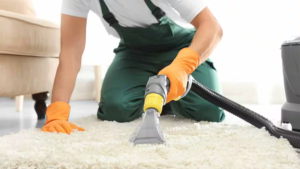When choosing a residential garage door, it’s important to select one that matches the architectural style of your home. It’s also a good idea to consider your lifestyle and the value your garage adds to your property.

Most Garage Doors Newcastle hang from rollers that ride along tracks at the top of the opening. They can be operated manually or by a remote.
The garage door is one of the largest openings in a home and can allow cold air to escape during winter and hot air to escape during summer, increasing energy bills. A well-insulated garage door can help prevent this unwanted transfer of heat and air, decreasing utility costs and helping you make a positive impact on the environment.
Energy efficiency is primarily determined by the R value of the insulation used. The R-value rating is a measure of how well the insulation blocks air flow, preventing outside temperatures from transferring into the garage and other living spaces attached to it. A non-insulated garage door typically has no R-value and is made of steel, allowing outside temperatures to easily penetrate into the garage. Insulated garage doors have a higher R-value and offer a higher level of climate control, making them a better choice for homeowners seeking to reduce their utility bills.
Different insulated garage door options include steel, aluminum and wood. Each offers varying levels of insulating capacity, but all are designed to resist harsh weather conditions and the damaging effects of sunlight. Steel and aluminum are durable options that can withstand even heavy impacts without a dent or rust, and they also have a good R-value when they include polystyrene or polyurethane insulation between the layers.
Polyurethane is more efficient than polystyrene, and it is also environmentally friendly. It is injected between the metal layers of an insulated garage door, so it fills every crevice and hardens for increased durability and superior insulation. Insulated garage doors with Intellicore by Clopay use this innovative technology and boast a high R-value, ensuring they block the most amount of heat transfer while keeping the temperature inside your garage comfortable.
Other features that affect the energy efficiency of a garage door include how durable it is and its ability to block sound. Durable garage doors last longer and require fewer repairs and replacement parts than flimsy, lower quality models, saving you time and money over the long term. They also have a low U-factor, which means that less energy is transferred through the garage door and into your home than a door with a higher U-factor.
Security
While style and efficiency are often the primary factors behind garage door selection, it’s important to consider the security of your home’s entry point. Statistics show that burglars are likely to target homes whose garage doors are left open or unlocked. Fortunately, there are several easy upgrades you can make to keep your garage and the rest of your home safe from intruders.
Install a garage door with multiple locking mechanisms. While most garage doors are insulated and designed to resist break-ins, a double-skinned metal panel with a strong steel frame offers even more protection from thieves looking for easy access into your home. This is especially true if you choose to invest in a sectional door, which has no leverage points and features a sturdy track mechanism that prevents the door from being lifted once it’s closed.
If you’re a chronic forgetter, consider investing in a smart opener with a timer. This feature can be set to close the garage door at a pre-determined time, preventing it from being opened by an intruder or by your kids after school.
A modern garage door with an insulated frame is a great deterrent for burglars, who may be looking to steal expensive woodworking tools or that brand new mountain bike that’s been parked in the driveway all week. Many modern garage doors also include roll-up security bars that can be locked into place to further strengthen your garage’s security.
Consider a smart garage door sensor with integrated lighting. This simple upgrade can activate a bright light when it senses motion, which is sure to startle intruders and send them running. Some models, like the NETVUE Outdoor Camera with Night Vision available at Amazon, even sync with your phone and other devices to monitor activity and record evidence.
One of the easiest ways to break into your home is by stealing the garage door remote from your car. If you don’t want to ditch the remote altogether, replace it with a keychain model that can be easily locked in your pocket. This is an essential step to securing your entire home, not just the garage.
Durability
Durability is one of the most significant factors that determines how long a garage door lasts. The material type, thickness, and coating all contribute to how well a garage door resists weathering. Choosing a durable, high-quality door with a protective finish can ensure that it remains attractive and functional for as long as possible. Keeping the door clean, regularly checking for signs of wear, and engaging a professional for service can further contribute to its longevity.
A garage door’s durability is also influenced by its construction. Steel products, in particular, are incredibly durable and resistant to corrosion. They are able to endure abrasions, heavy impacts, and chemical exposure without showing signs of wear or tear. However, they can be vulnerable to rusting in areas with salty air or high humidity. Adding a galvanization process can help prevent this from occurring. Aluminum doors are similarly robust, but not as strong as steel. They tend to show signs of damage more quickly, and they can be prone to denting in harsh climates.
In addition to evaluating material quality, homeowners can maximize a garage door’s lifespan by opting for an insulated design. Insulation helps regulate temperature and reduce energy costs, while also strengthening the doors to better withstand weathering. While non-insulated doors feature a single layer of material, insulated options include a steel skin backed with a rigid foam insulation of varying R values.
Garage doors can add to the aesthetics of a property, as they are available in a variety of styles. Wood doors, for example, offer natural beauty and can match the style of a home’s façade. In contrast, metal doors provide a modern look and can be painted to complement the home’s color scheme. Some options even feature windows, which can enhance a house’s curb appeal and boost its value.
Garage doors are complex and require professional expertise for proper installation and significant repairs. Regular maintenance and servicing can also significantly extend the life of a garage door. Regularly inspecting the system for issues, such as misalignment or spring failure, can prevent problems from arising. Additionally, regularly lubricating components can help ensure that the door operates smoothly and quietly for as long as possible.
Style
Your garage door is one of the most visible parts of your home. It needs to reflect the character of your house without overpowering it. The good news is that there are plenty of options available to you. Many manufacturers offer products that complement major American architectural styles like Colonial, Victorian and Ranch. Others focus on the Craftsman style popularized by the 19th century Arts & Crafts movement. Still others are designed to blend in with contemporary homes using clean lines and minimalist design elements.
A garage door can also help your family be more productive by increasing storage space in the garage. With better insulation from the cold and hot air, you’ll save on heating and cooling costs while also freeing up room for a workshop or long-term vehicle storage.
Depending on the style of your home, you can choose from a variety of different garage door colors, materials and windows. Composite wood layered over steel and insulation is often used to create the look of traditional wood doors but offers improved energy efficiency. Glass and acrylic doors can add a modern, stylish touch to your garage while offering light, visibility and privacy.
The garage door is the largest component of your home that can be seen from the street. It should reflect your taste and match the color of the other exterior components. Choosing the right garage door is a good way to improve your curb appeal and enhance the value of your home.
If your existing garage door is in poor shape or no longer matches the rest of your home, it’s time to make a change. A new garage door can offer a monthly ROI through energy savings on your heating and cooling bills and it can boost the value of your home.








